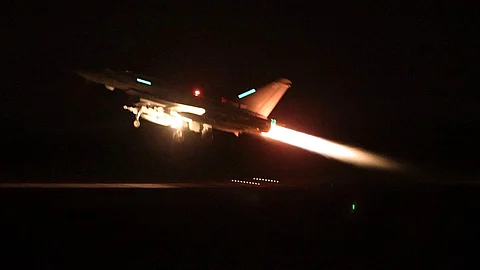

In the turbulent waters of the Red Sea, the Houthi rebels have emerged as a formidable force, influencing Yemen's destiny and triggering international responses. This comprehensive exploration delves into the historical roots, ideological alliances, military actions, and geopolitical dimensions of the Houthi enigma, with a spotlight on the recent Red Sea conflict.
The Houthi movement's inception in the 1990s reflected the discontent among Yemen's Zaidi Shia Muslim minority. Fueled by grievances against corruption, the group, named Ansar Allah, gained momentum under the leadership of Hussein al Houthi.
Tensions escalated into a full-scale civil war by 2014, pitting Houthi rebels against the Yemeni government. President Ali Abdullah Saleh's attempts, backed by Saudi Arabia's military, set the stage for a protracted conflict marked by a humanitarian crisis.
By 2022, the conflict had claimed an estimated 377,000 lives and displaced four million people, casting a shadow over Yemen's future.
Aligning with the Iranian-led "axis of resistance," the Houthis positioned themselves against perceived adversaries – Israel, the US, and the broader Western world. This ideological alignment shapes their actions and garners support from key players.
Drawing inspiration from Lebanon's Hezbollah, the Houthi rebels receive extensive military expertise and training, a testament to the enduring influence of this Shia armed group.
While Iran denies direct involvement, the US contends that Iran supplies weapons and crucial intelligence. This alleged support challenges the UN arms embargo, sparking international scrutiny.
Houthi attacks on cargo ships in the Red Sea prompted swift international intervention. Led by the US and the UK, air strikes aimed to deter further assaults on vital shipping routes. Australia, Bahrain, Canada, and the Netherlands joined the coalition.
The surge in Houthi attacks in the Red Sea, escalating by 500% between November and December, led to major shipping companies diverting vessels and a tenfold increase in insurance costs.
Beyond ideological alignment, the Houthis' association with Iran extends to suspected weapon supplies. Accusations from the US and Saudi Arabia underscore the geopolitical dimensions of this alliance.
Traditionally rivals, Saudi Arabia's military intervention supports Yemen's government against the Houthi rebels. The Yemeni government, operating from Riyadh since 2015, faces challenges in regaining control.
The Houthi rebels control vital regions, including the capital, Sanaa, and the Red Sea coastline. Governing territories where the majority of Yemen's population resides, they wield influence over taxes and currency.
Impact on Global Trade
Control of the Red Sea coastline is strategically crucial, affecting nearly 15% of global seaborne trade. Major shipping companies, including Mediterranean Shipping Company and Maersk, altering routes indicate the potential impact on global supply chains and fuel prices.
The Houthi rebels' intricate role in Yemen's geopolitical landscape extends beyond their immediate surroundings. From ideological alliances to military actions and control over vital territories, understanding the Houthis is pivotal in navigating the complexities of the Yemeni conflict.
Acknowledging Complexity
This exploration, while comprehensive, acknowledges the multifaceted dynamics of the Yemeni conflict. The Houthi rebels' actions, alliances, and influences intertwine with regional and global geopolitical complexities, posing challenges for sustainable solutions in Yemen.
This copy is written based on various agency inputs as well as inputs taken from BBC and Al Jazeera